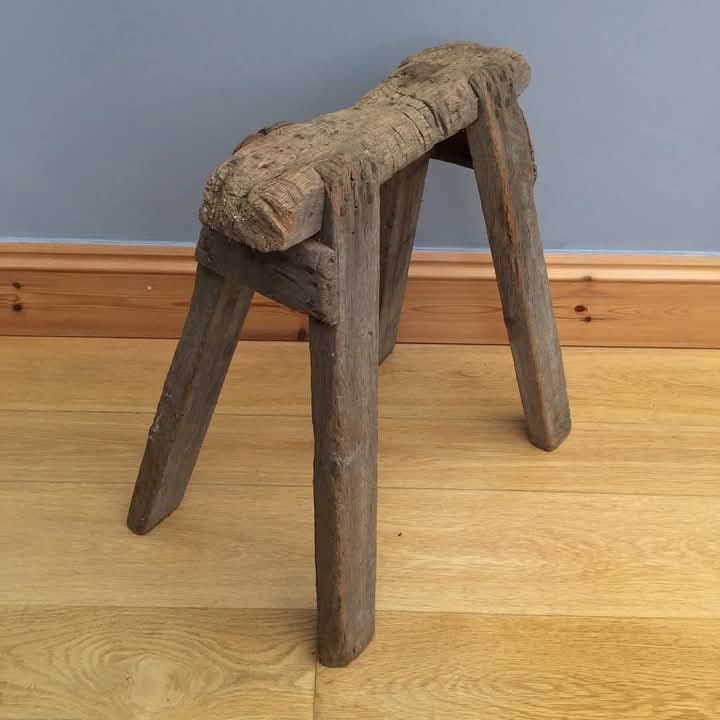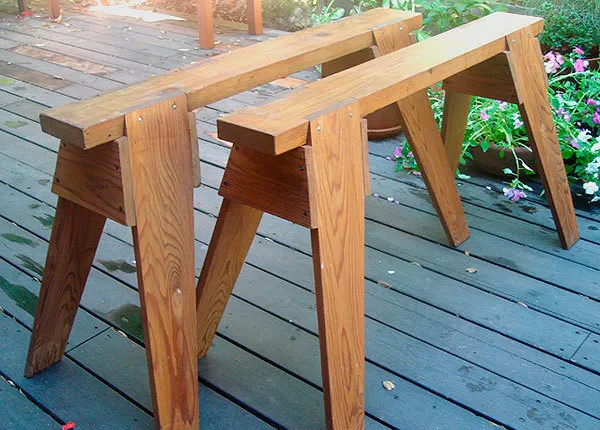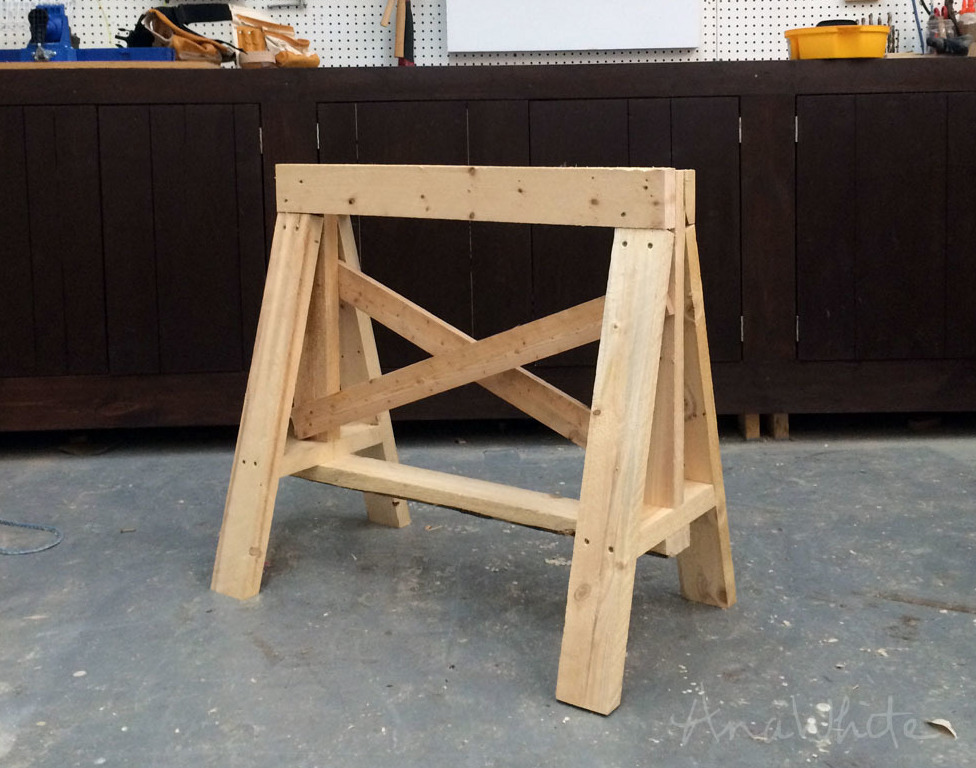A sawhorse, also known as a trestle or trestle bench, is one of the most practical and versatile tools in a carpenter’s arsenal. Despite its simple design, it can function as a work platform, scaffolding, or even a sturdy table when topped with plywood. If you’re looking to craft your own sawhorse, this guide will walk you through the process, blending time-tested techniques with practical tips to ensure you build a durable and reliable tool.
What is a Sawhorse?

A sawhorse is a four-legged structure traditionally used to support wood for sawing. It has a simple yet effective design that offers stability and portability. Over the years, sawhorses have evolved to accommodate modern tools and practices but still maintain their core purpose: providing a stable work surface.
Why Build Your Own Sawhorse?
Although pre-made sawhorses are readily available, building one yourself ensures customization and durability. Here are some benefits of crafting your own:
- Tailored Design: Customize the height and width for your specific needs.
- Cost-Effective: Use leftover materials, saving money.
- Learning Opportunity: Improve woodworking skills with a hands-on project.
Materials and Tools Needed
To construct a sturdy and functional sawhorse, gather the following materials and tools:
Materials
- 2×4 or 2×6 lumber for the cross beam
- 1×12 board for optional shelves
- 1×2 strips for shelf edges
- Plywood scraps for gussets
- Nails, screws, and wood glue
Tools
- Handsaw or circular saw
- Chisel and hammer
- Framing square
- Sliding T-bevel
- Measuring tape
- Combination square
Step-by-Step Guide to Building a Sawhorse
1. Determine the Height and Dimensions
A standard sawhorse is knee-high, approximately 24 inches tall. For specific tasks, you can adjust the height:
- Low Horses: About 12 inches tall for ceiling work.
- High Horses: Taller legs for scaffolding, which can be trimmed later.
2. Prepare the Cross Beam
The cross beam forms the backbone of the sawhorse. Follow these steps:
- Choose a straight, sturdy piece of lumber.
- Cut the beam to a standard length of 42 inches for balance and portability.
- Mark and measure the positions for the legs, ensuring proper spacing for stability.
3. Create Mortises for the Legs

To ensure the legs fit securely, you’ll need to cut mortises into the cross beam:
- Mark the mortises 4 inches from each end using a framing square.
- Use a saw to make parallel cuts within the marked area.
- Chisel out the wood between the cuts, creating a snug fit for the leg tops.
4. Cut the Legs
The legs must splay outward for stability. Here’s how to achieve this:
- Use the “4-in-24” method to calculate the angle of the splay.
- Cut the legs longer than the final height (around 26 inches) to account for the angled cuts.
- Ensure the cuts on the tops and bottoms of the legs form compound angles.
5. Attach the Legs to the Cross Beam
Secure the legs in the mortises using wood glue and nails:
- Apply glue to the rear wall of the mortise.
- Insert the leg, ensuring a snug fit.
- Nail the legs into place with 8d nails for added stability.
Adding Stability with Gussets and Shelves
1. Gussets for Strength
Trapezoidal gussets made from plywood provide additional support:
- Cut gussets with non-parallel sides to match the angle of the legs.
- Attach them to the legs and cross beam using glue and drywall screws.
2. Optional Shelf

Adding a shelf increases utility and stability:
- Use a 1×12 board wedged between the legs as the shelf.
- Attach 1×2 strips along the shelf edges to prevent tools from rolling off.
- Secure the shelf with screws, reinforcing the sawhorse.
Tips for a Professional Finish
- Check Stability: Place the finished sawhorse on a flat surface to ensure it doesn’t wobble.
- Protect the Top: Cover the cross beam with scrap plywood to prevent damage from saw cuts.
- Avoid Drywall Screws for Load-Bearing: Use nails or specialized screws for structural elements, as drywall screws can snap under pressure.
Common Mistakes to Avoid
- Incorrect Leg Angles: Double-check measurements to ensure the legs splay evenly.
- Loose Mortises: A tight fit is crucial for stability.
- Overloading: While sturdy, sawhorses have weight limits. Reinforce if using for heavy-duty tasks.
Why a Well-Made Sawhorse Matters
A well-constructed sawhorse is more than just a tool—it’s an investment in efficiency and safety. Whether you’re cutting lumber, painting, or working on high ceilings, the right sawhorse makes all the difference. Its versatility and longevity mean that a little extra effort during construction will pay off for years to come.
Conclusion
Building your own sawhorse is a rewarding project that combines practicality and craftsmanship. With a few tools, basic materials, and attention to detail, you can create a sawhorse tailored to your needs. Its simplicity belies its importance—this humble tool remains indispensable for anyone tackling woodworking or home improvement tasks. So grab your tools and start building your sawhorse today!


